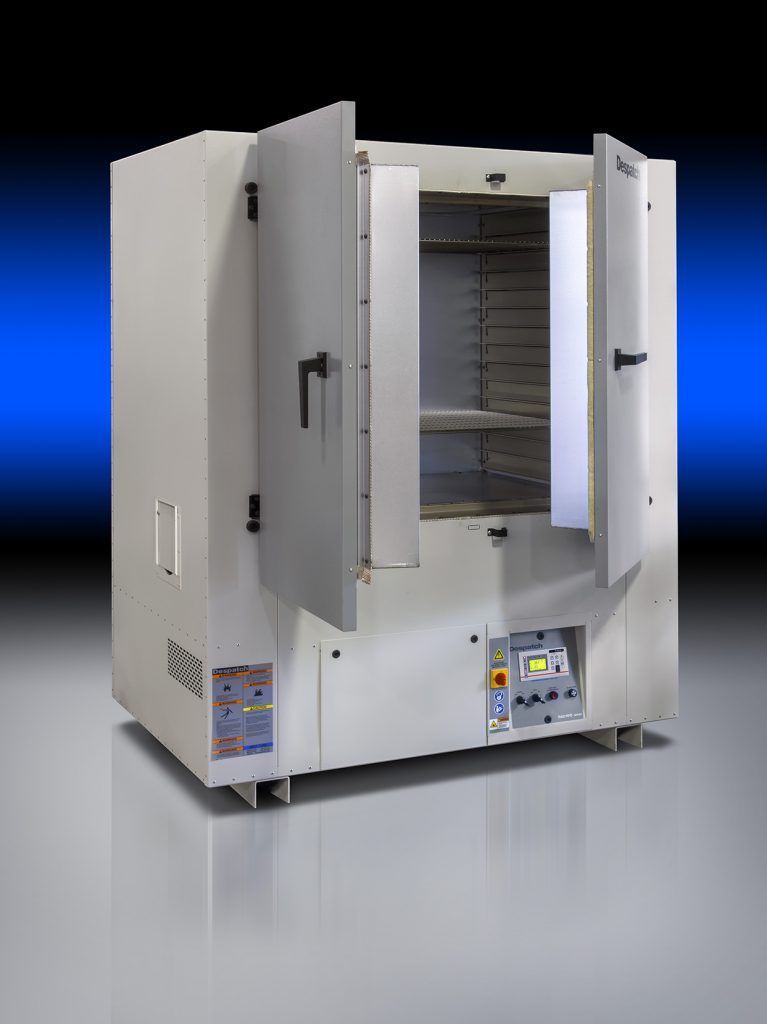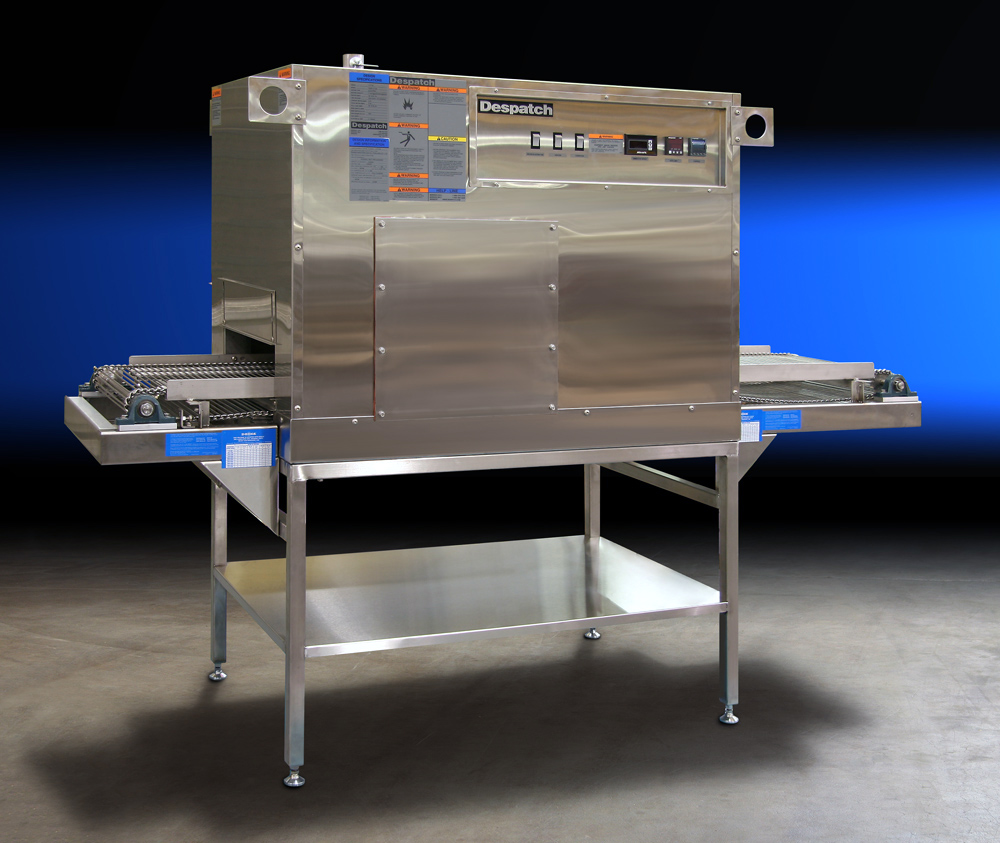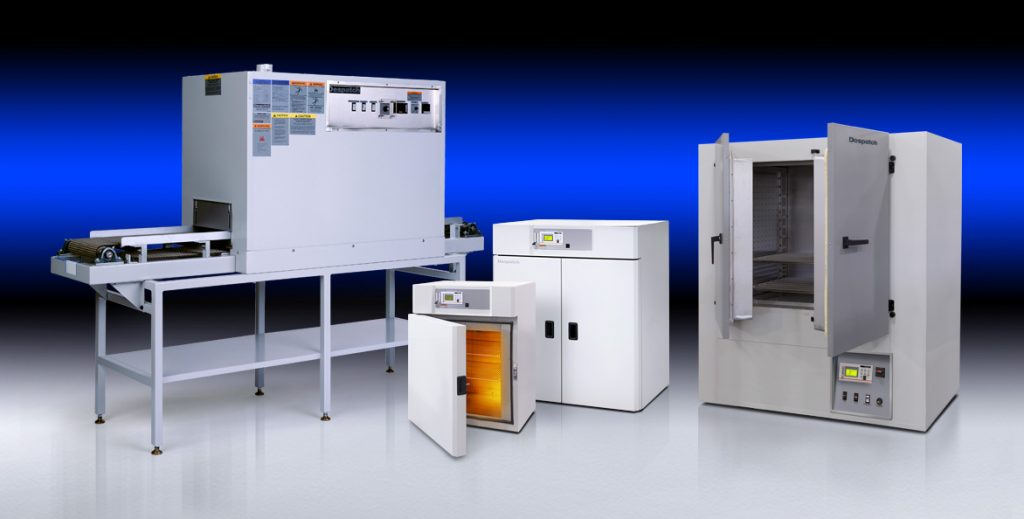Are you experiencing bottlenecks in production? Are productivity, efficiency, and profitability down? Then, it may be time for a new industrial oven. Ovens drive many critical production processes manufacturing. Why not? They’re capable of operating at high temperatures and are ideal for heat-treating parts, metals, and manufactured components. The question is: Do you need a batch oven or conveyor oven for your application? That depends on several factors.
Choosing between these two types of ovens isn’t easy. Both types have their pros and cons. And both well suited are ideal for bonding, drying, baking, curing, and heat-treating items. So, how do you decide between the two? Simply put, a batch oven is ideal if you’re processing low volumes of unique parts or components. In almost all other cases, a continuous oven is the better choice. Needless to say, choosing between the two oven types for your application is more challenging.
Batch Ovens versus Conveyor Ovens
Conveyor ovens use continuous motion featuring horizontal, vertical, inclined, or spiral paths to move items. Conveyor ovens include powered roller, belted chain-on-edge (COE), overhead, or power and free. Batch ovens let you place products in a static position for heat treating, with products within the chamber positioned randomly or consistently and uniformly. Batch ovens can accommodate large or unusually shaped items and various load sizes that won’t fit in conveyor ovens.
When deciding between a batch or conveyor oven, you need to consider the following seven factors:
- Oven application
- Oven cost and scalability
- Operational floor space
- Cycle time and maintenance
- Product size and shape
- Production volume/flow
- Quality control/repeatability
Let’s take a closer look at each of these factors. The information below will assist you in making the right decision for your production process.


1. Application of the oven
Batch ovens are diverse in their application. They’re the top choice if you want an inert atmosphere, clean-room application; thermal control; and a closed-process machine. Batch ovens are also ideal for items with different sizes, shapes, weights, and thermal requirements.
Conveyor ovens are ideal for large volumes of items and smaller pieces with similar physical size, composition, and shape. These ovens often feature automated processes, variable speed control, even heat distribution through heat zones, and separate heating and cooling chambers.
2. Oven cost and scalability
Price is critical when purchasing an industrial oven—whether you’re a start-up or an established company upgrading an existing product line. Batch ovens are cheaper than conveyor ovens initially, but conveyor ovens are a more viable option depending on your organization’s long-term goals. If you’re a small business, you may want to opt for a batch oven, which you can upgrade later as your financial situation gains momentum.
3. Operational floor space
Batch ovens generally require less floor space thanks to their smaller footprint. You can even build them into corners and walls, utilizing all available floor space. But batch ovens often come with carts, shelves, and attachments, which will also require operational floor space. Conveyor ovens usually are larger and require more floor space, but they come without carts, shelves, and attachments, saving space.
4. Cycle time and maintenance
The type of process you’re implementing significantly impacts which oven you buy. If you’re employing an even, static heating and cooling process, a batch oven’s cycle time has minimal impact on production. Plus, batch ovens feature fewer moving parts that can become maintenance issues.
Conveyor ovens have separate compartments where a variation in temperature controls can be implemented and have a cycle time factor. But having more moving parts does not deter the use of a conveyor system as a choice. State-of-the-art monitoring capabilities can reduce the added maintenance component and sustain a good up-time rate.
5. Product size and shape
You need more individual control when processing large parts and components. Plus, the items may need more heating and processing time, making them ideal for batch ovens. On the other hand, small products with short process times and high production volumes are ideal for conveyor ovens. They’re also better when serving one purpose, making them ideal for large-scale production needs when the process is standardized or as close to it as possible.
6. Product flow/volume
Product flow is the path the item takes as it moves from material to finished product. Conveyor ovens compensate for their large footprint by fitting neatly into your automatic processes. They also eliminate the need for carts and shelving for transferring the product from one station to another. Plus, they eliminate storage room for these add-ons. Have your oven customized to your product flow.
7. Quality control/repeatability
To meet today’s quality demands, you must control production variance. Automated lines, like those that come with conveyor ovens, provide less loading freedom and fewer timing decisions. In addition, batch units are often loaded with an operator’s help. As a result, the cycle time may vary unless you use a ramp/soak programmer. However, in most batch oven applications, outcomes vary because humans control the variable
Temperature control and uptime are additional considerations when choosing between a batch and conveyor oven.
Considerations are Just a Starting Point
Industrial ovens—batch or conveyor—are critical in many production processes. Conveyor ovens are less labor intensive, feature good product flow, work well in high production environments, and achieve consistent quality. However, conveyor ovens are also more expensive, require more maintenance, and are limited in the flexibility of parts they can process. Conveyor ovens are ideal for applications with shorter process times.
Batch ovens are less expensive, more flexible in handling variable-sized products, have fewer maintenance needs, require less space, and work well for low-to-medium product rates and more oversized items. Batch ovens, however, are more labor intensive, aren’t always suitable for smaller, higher volume items, and tend to need more area for support racks, shelving, and carts. Plus, product quality is susceptible to human error.
Choosing between these oven types is a challenge. No doubt about it. If you’re having trouble choosing between the two, an experienced industrial oven manufacturer can help with your decision-making. Having the right industrial oven eliminates production bottlenecks and boosts productivity, efficiency, and profitability.






